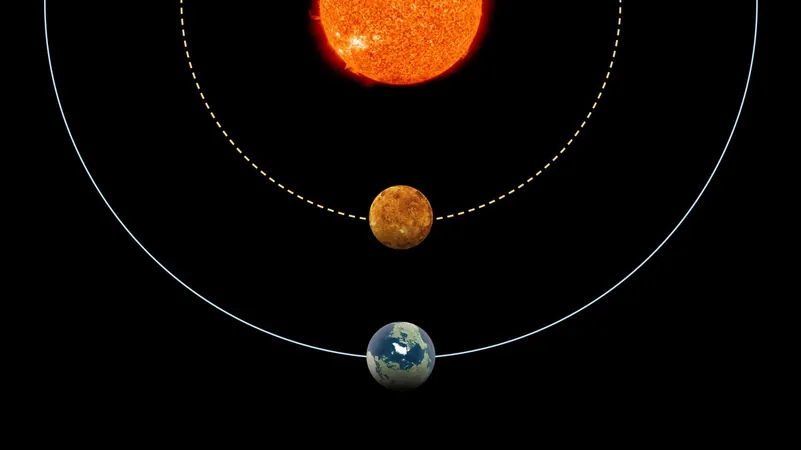
Unlocking the Mystery of Infantile Amnesia: What Science Reveals About Memory in Babies
2025-03-21
Author: Ming
Unlocking the Mystery of Infantile Amnesia: What Science Reveals About Memory in Babies
For many of us, our earliest memories from childhood are clouded or completely forgotten. This phenomenon, known as "infantile amnesia," occurs in most humans, rendering our memories from before the age of four nearly nonexistent. Surprisingly, this memory lapse isn't unique to humans—it seems to happen across various mammalian species.
Traditionally, it was believed that the reason for this amnesia was simply that the brain's ability to form long-term memories wasn't fully developed until around age four. However, recent groundbreaking studies using animal models have upended this notion, revealing a far more intricate situation: while these early memories exist, they remain largely inaccessible but can potentially be reactivated.
The Mouse Model Experiment
Mice have come under the spotlight in research concerning infantile amnesia due to extensive studies spanning over 100 years. These studies have equipped scientists with sophisticated genetic tools to delve deeper into the mechanics behind memory retention in these animals.
One particular study that surfaced last year laid out compelling experiments. Young mice were subjected to learning tasks that involved associating a light coming on with receiving a mild shock. Understandably, if left alone, the mice would eventually forget this association—a clear example of infantile amnesia at work.
However, researchers discovered that they could manipulate neural activity. By genetically engineering the mice, they were able to activate certain genes that produced proteins capable of modifying DNA. This altered the way memories within the mice could be accessed later. When these mice were exposed to specific light frequencies weeks or months after the initial learning task, it triggered the neurons responsible for those memories, effectively 'replaying' their past behaviors as if they remembered the association with the shock.
Unraveling Memory in Human Infants
But can these findings translate to humans? Trying to replicate such experiments ethically with human infants is, of course, out of the question. Instead, researchers turned to established infant memory tests. They placed infants in MRI machines and showed them a series of visual images, tracking brain activity specifically in the hippocampus—the region associated with memory.
The results were fascinating. Although initial analyses didn't show clear evidence of memory retention, deeper investigation revealed that older infants—around one year old—tended to exhibit longer gaze times at familiar images. This pointed to the onset of memory formation and suggested that while the hippocampus was still maturing, the groundwork for memory retention was indeed taking place.
This aligns with findings from mouse studies, indicating that memories formed in early infancy are effectively 'stored' but possibly inaccessible during certain developmental windows.
Unanswered Questions and Future Directions
This research presents more questions than answers. Why do these memories remain suppressed? What neural mechanisms are at play to distinguish between memories that can be accessed and those that cannot? Understanding these processes may not only shed light on human cognitive development but could also unveil potential advantages to this selective amnesia as part of mammalian brain evolution.
As science pushes the boundaries of understanding memory, it seems we may soon uncover the deeper implications of infantile amnesia, potentially leading to breakthroughs in educational strategies, therapeutic methods for memory-related disorders, and a comprehensive understanding of our cognitive lives from infancy onward.
Prepare for a paradigm shift in how we understand memory—it's time to look back into our past!




 Brasil (PT)
Brasil (PT)
 Canada (EN)
Canada (EN)
 Chile (ES)
Chile (ES)
 Česko (CS)
Česko (CS)
 대한민국 (KO)
대한민국 (KO)
 España (ES)
España (ES)
 France (FR)
France (FR)
 Hong Kong (EN)
Hong Kong (EN)
 Italia (IT)
Italia (IT)
 日本 (JA)
日本 (JA)
 Magyarország (HU)
Magyarország (HU)
 Norge (NO)
Norge (NO)
 Polska (PL)
Polska (PL)
 Schweiz (DE)
Schweiz (DE)
 Singapore (EN)
Singapore (EN)
 Sverige (SV)
Sverige (SV)
 Suomi (FI)
Suomi (FI)
 Türkiye (TR)
Türkiye (TR)
 الإمارات العربية المتحدة (AR)
الإمارات العربية المتحدة (AR)